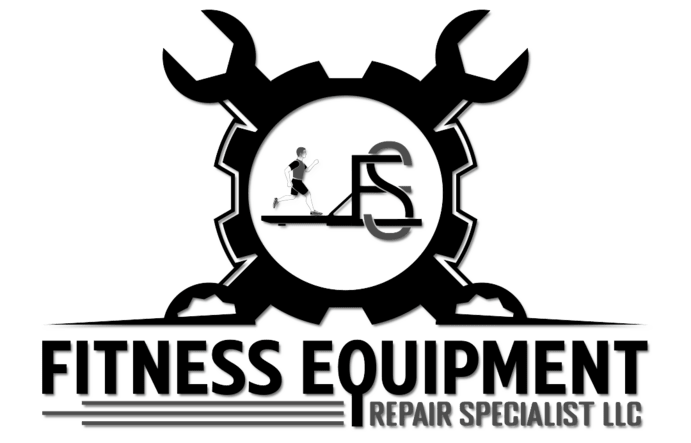
write me 50 characters of meta title and 150 characters of meta description
April 28, 2024
A Guide to Disposing of Old Gym Equipment Responsibly
May 2, 2024Fitness benches are versatile pieces of equipment that can elevate your home gym workouts. They provide a stable platform for a variety of exercises, from weightlifting to core strengthening. However, even the sturdiest bench can encounter problems over time, potentially hindering your workouts or even creating safety hazards. Let’s explore eight common fitness bench issues and learn how to prevent or fix them:
- Wobbly Bench:
Problem: A wobbly bench can be extremely frustrating and even dangerous. It disrupts exercise form and increases the risk of muscle strain or injury.
Prevention:
- Purchase a High-Quality Bench: Invest in a sturdy bench with a stable frame and a wide base. Look for benches with solid welds and thick gauge steel tubing.
- Assemble Carefully: Ensure you follow the assembly instructions meticulously, tightening all bolts and screws securely. Double-check the tightness of all hardware periodically.
- Place on a Level Surface: Use your fitness bench on a flat, even surface. Uneven flooring can contribute to wobbling. Consider using rubber mats underneath the bench for added stability and floor protection.
Fixes:
- Tighten Loose Screws and Bolts: Over time, screws and bolts can loosen, causing wobbling. Assess the bench frame for loose connections and tighten them with the appropriate tools.
- Replace Worn Stabilizing Feet: Some benches have rubber or plastic feet that offer stability. If these become worn or cracked, replace them to minimize wobbling.
- Reinforce the Frame (Advanced): For more advanced DIY solutions, consider reinforcing wobbly joints or loose welds with metal brackets or epoxy (consult a structural engineer for complex repairs).
- Torn or Ripped Padding:
Problem: Torn or ripped padding can be uncomfortable and unhygienic. It may also affect the stability of your exercise form.
Prevention:
- Choose Durable Padding: Opt for benches with thick, high-density foam padding for comfort and longevity.
- Proper Use: Avoid using sharp objects near the bench or performing exercises that could damage the padding with excessive weight or force.
Fixes:
- Patch Minor Tears: For small tears, consider patching them with heavy-duty fabric patches or vinyl repair kits.
- Replace Worn Padding: If the padding is extensively ripped or flattened, replace it with high-density foam padding cut to fit the bench size. Many manufacturers offer replacement padding for their benches.
- Consider a Bench Cover: A good quality bench cover can offer additional protection for the original padding and improve hygiene.
- Squealing or Noisy Bench:
Problem: Squeaking or grinding noises from the bench can be distracting and disrupt your workout flow.
Prevention:
- Regular Lubrication: Periodically apply a light coat of silicone-based lubricant to metal moving parts like hinges or adjustment mechanisms. Consult the user manual for specific lubrication points.
- Proper Maintenance: Wipe down the bench after each use to remove sweat and moisture. Avoid using harsh chemicals that could damage the metal or padding.
Fixes:
- Identify the Source: Pinpoint the location of the noise by moving different parts of the bench. Is it coming from the frame, hinges, or adjustment mechanisms?
- Lubricate Noisy Parts: Apply a thin layer of lubricant to the identified source of the noise.
- Tighten Loose Bolts: Check all bolts and screws for tightness. Loose connections can also contribute to squeaking and grinding.
- Difficulty Adjusting Backrest or Seat:
Problem: Difficulty adjusting the incline or decline angle of the backrest or seat can limit the exercise variations you can perform.
Prevention:
Choose Smooth Adjustment Mechanisms: Look for benches with smooth-operating adjustment mechanisms. Test the ease of adjustment before purchasing a bench.
Fixes:
- Clean and Lubricate: Over time, dust or dirt buildup can impede the smooth operation of adjustment mechanisms. Clean these areas with a damp cloth and apply a light coat of lubricant.
- Check for Worn Parts: If the mechanism is severely worn or broken, replacing it might be necessary. Consult the manufacturer for replacement parts or repair recommendations.
- Rusted Metal Frame:
Problem: Rust on the bench frame can be unsightly and eventually compromise the structural integrity of the bench.
Prevention:
- Store in a Dry Location: Avoid storing your bench in humid environments like basements or garages. Moisture can lead to rust formation.
- Wipe Down After Use: Wipe down the bench after each workout to remove sweat and moisture that can accelerate rusting.
- Apply Rust Preventative: After wiping down the bench to remove sweat and moisture, consider applying a thin coat of a rust-preventive product to exposed metal surfaces.
Fixes:
- Remove Rust (For Minor Cases): For minor rust spots, use a wire brush or sandpaper to remove loose rust particles. Apply a rust-inhibiting spray or paint to prevent further corrosion.
- Replace Severely Rusted Components: If the rust is extensive and compromises the frame’s structural integrity, replacing the affected components may be necessary. Consult a professional welder for repairs or consider purchasing a new bench for safety reasons.
- Worn or Broken Upholstery Straps:
Problem: Worn or broken upholstery straps that secure the user in position during exercises can pose safety hazards.
Prevention:
- Choose Durable Straps: Opt for benches with thick, reinforced straps made from high-quality materials like nylon or polyester.
- Proper Use: Avoid excessive weight or pressure on the straps that could lead to tearing or breakage.
Fixes:
- Replace Worn Straps: Don’t risk safety! Replace worn or damaged straps immediately with manufacturer-approved replacements. Ensure proper installation according to the user manual.
- Reinforce Straps (Advanced): For minor wear on existing straps, consider sewing on patches to reinforce them. However, this is a temporary solution – prioritize replacing worn straps for optimal safety.
- Damaged or Missing Hardware:
Problem: Missing or damaged screws, bolts, or pins can compromise the stability and functionality of the bench.
Prevention:
Careful Assembly and Storage: During assembly, double-check that all hardware is tightened securely. Store the bench in a safe location to minimize damage to hardware by weightlifting equipment or sharp objects.
Fixes:
- Replace Missing Hardware: Locate replacements that match the original size and thread type of the missing hardware. Most hardware stores carry a wide variety of screws, bolts, and pins.
- Consult the Manufacturer: Sometimes, missing hardware can indicate a manufacturing defect. Contact the manufacturer for replacement parts or warranty information.
- Difficulty Assembling or Disassembling the Bench:
Problem: A complex assembly process or challenging disassembly can be frustrating and time-consuming.
Prevention:
- Choose a User-Friendly Design: Look for benches with clear and concise assembly instructions, ideally supplemented with detailed diagrams.
- Read Instructions Carefully: Prior to assembly, thoroughly read and understand the user manual. Identify all parts and hardware before starting the assembly process.
Fixes:
- Online Resources: If you encounter difficulties during disassembly or reassembly, consult the manufacturer’s website for instructional videos or additional resources.
- Seek Help: Consider enlisting the assistance of a friend or family member during assembly or disassembly, especially for complex bench designs.
Why Fitness Benches Belong in Your Workout Routine
Fitness benches are more than just simple weightlifting platforms. They’re versatile pieces of equipment that can elevate your home gym workouts, offering a foundation for a wide range of exercises targeting various muscle groups. Here’s why a fitness bench deserves a spot in your exercise arsenal:
- Fittnes benches are the way toward alot of exercise possibilities. From dumbbell presses and chest flyes to incline curls and decline sit-ups, benches allow you to target your upper body, core, and even legs with diverse exercises.
- A stable bench provides a platform for proper body positioning during exercises, maximizing workout effectiveness and minimizing the risk of injury.
- Compared to bulky weight machines, benches offer a space-saving solution for strength training. Many benches are foldable or adjustable, making them ideal for compact home gyms.
- Fitness benches are a relatively affordable investment compared to other strength training equipment. This allows you to build a versatile home gym at a reasonable cost.
- As your fitness level progresses, you can easily adjust the difficulty of exercises performed on the bench by increasing weight loads, incorporating incline/decline variations, or adding resistance bands for an extra challenge.
Investing in a fitness bench opens doors to a diverse and effective workout routine, making it a valuable addition to any fitness enthusiast’s home gym.
Nj Fitness Equipment Repair offers comprehensive fitness equipment repair services across New Jersey and select areas of New York, including Rockland County, parts of Orange County, Westchester County, the Bronx, and New York City. With a commitment to quality and customer satisfaction, our team of experienced technicians ensures prompt and reliable repairs for a wide range of fitness equipment, including treadmills, ellipticals, exercise bikes, and strength training machines.
Conclusion:
Fitness bench issues that need to be avoided and fixed if you want to prolong the life of your equipment, keep your workout space safe, and get the most out of it. Check your bench frequently for wear and tear, fix any issues right once, and maintain it according to the recommended procedures. By following these guidelines, you may make the most of your fitness bench and confidently concentrate on reaching your fitness objectives.

